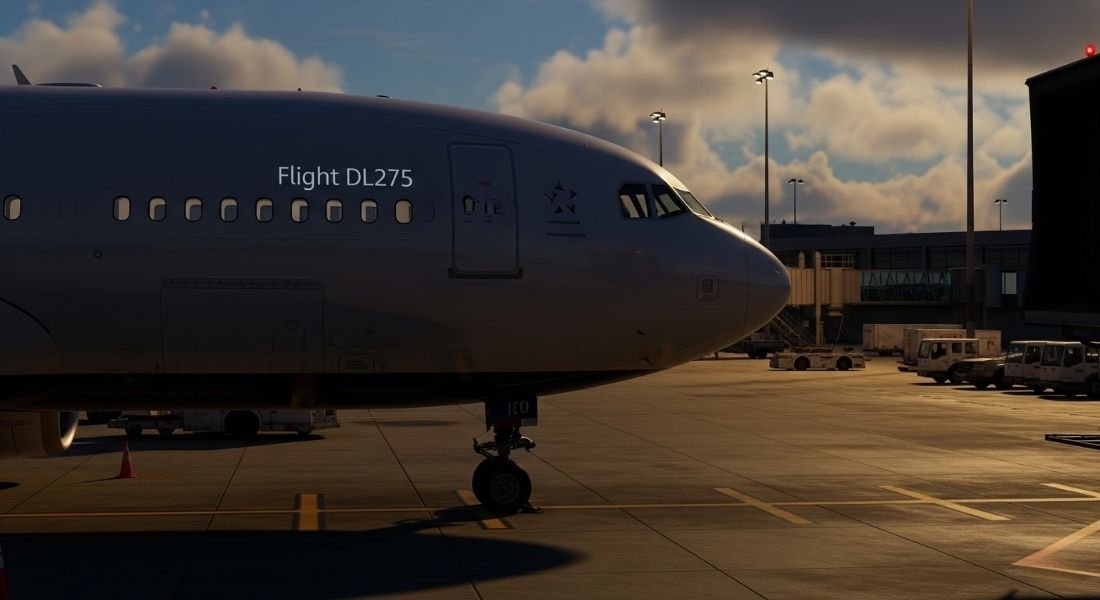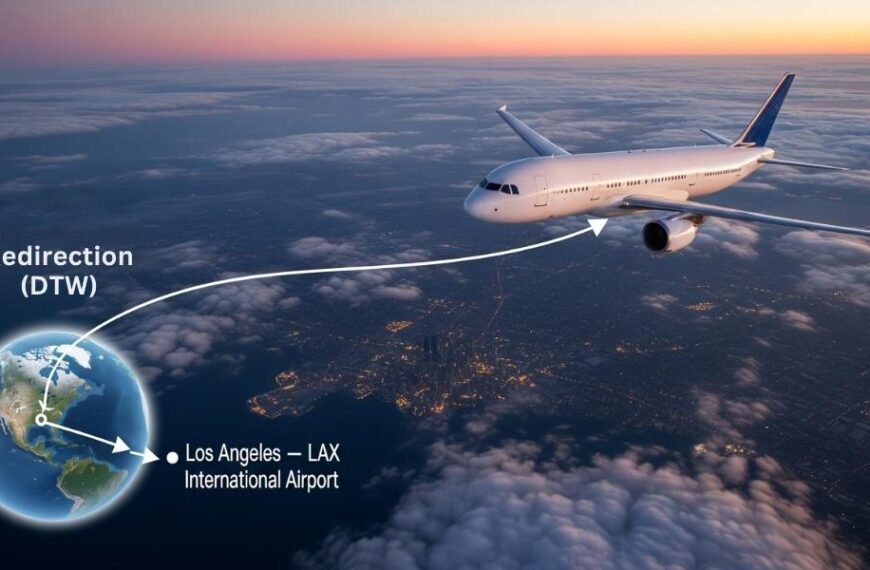When flight trackers lit up showing Delta DL275 rerouting across the Pacific toward Los Angeles, aviation enthusiasts and passengers alike were quick to ask why so far off course? The long‑haul flight from Seoul to Atlanta made headlines.
When it diverted to LAX, sparking curiosity about what drives such decisions. In reality, diversions like this aren’t signs of trouble they are proof of strict safety protocols at work. From technical requirements to airport capabilities, this case reveals how airlines prioritize safety and precision above all else.
This comprehensive guide covers everything from what causes such diversions, why LAX is often chosen to what happens next when you’re a passenger on that flight.
What Is Delta DL275 and Why Was It Headed to LAX?
Delta DL275 is a long haul international flight operated by Delta Air Lines, typically using a large wide body aircraft like the Airbus A350. Its usual route connects Incheon International Airport (ICN) in South Korea to Hartsfield–Jackson Atlanta International Airport (ATL) in the U.S.
On August 6, 2025, flight tracking data showed DL275 diverting unexpectedly to Los Angeles (LAX) mid way over the Pacific, causing widespread curiosity online.
Why such a long diversion? The key lies in a combination of safety protocols, aircraft limitations and airport capabilities.
Understanding In Flight Diversions: The Basics
Let’s first define what a flight diversion is.
A diversion happens when a flight cannot land at its scheduled destination and is forced to land at an alternate airport. Reasons include:
- Mechanical or technical issues
- Medical emergencies
- Security threats
- Severe weather
- Fuel concerns
These situations require fast decision making, with the crew and airline considering factors like:
- Nearest safe landing point
- Runway requirements
- Available medical or technical support
- Customs & immigration clearance
- Airline maintenance bases
This is where LAX comes into the picture.
Why Divert All the Way to LAX?
You might ask: Why not land in Alaska or Canada if you’re already over the Pacific? Good question. Here’s why LAX is often preferred:
ETOPS Compliance
Most long haul aircraft, like the Airbus A350 used on DL275, fly under ETOPS (Extended range Twin engine Operational Performance Standards). This FAA regulation dictates how far a plane can be from the nearest suitable airport during flight.
In emergencies, airlines need to pick an ETOPS certified diversion airport. LAX is one of the most reliable in North America.
Runway Length and Capacity
LAX offers multiple long runways (12,000 feet+) capable of handling large aircraft under emergency conditions. Smaller regional airports may not support heavy jets like the A350, especially in high weight or single engine scenarios.
Delta’s Maintenance & Operations Hub
LAX is a major Delta hub, with:
- On site technical staff
- Spare parts & equipment
- Access to trained engineers
If there’s a suspected mechanical issue like the one reported on DL275 involving the anti Ice system, LAX is ideal for inspection and repair.
Medical and Passenger Services
In case of onboard medical emergencies, LAX has:
- 24/7 ambulance and EMS services
- Nearby hospitals
- Direct tarmac access for emergency crews
Plus, passengers can be easily rebooked on connecting flights or housed at nearby hotels if needed.
U.S. Customs and Border Protection
As DL275 is an international flight, it can only land at airports with full CBP facilities. Not every alternate airport has U.S. Customs officers on site. LAX does.
Without proper customs clearance, passengers would have to be held on the plane or face legal entry issues.
What Reportedly Happened to Delta DL275?
As of August 6, 2025, publicly available data and unofficial airline sources reported that DL275 diverted to LAX due to a possible anti ice system failure. This is a critical system that keeps engines and wings from freezing at high altitudes.
Rather than risk flying over mountainous terrain or isolated airspace with a malfunctioning system, the crew followed safety protocols and diverted to the nearest suitable, certified and supported landing airport called LAX.
What Happens After a Diversion?
Once the aircraft lands safely, here’s what usually happens next:
- Aircraft Inspection:
Delta’s technicians inspect the systems and troubleshoot the problem. - Passenger Handling:
Depending on delay time and issue severity:- Passengers may reboard the same plane
- A replacement aircraft may be sent
- Passengers may be rebooked on later flights
- Accommodations:
If there’s a long delay, hotels and meals may be provided, especially on international flights.
Does This Affect Delta’s Reputation?
While a diversion may seem inconvenient, it shows the airline’s commitment to safety. Choosing to land at a better equipped airport even if it’s far that is always better than risking lives midair.
Conclusion
A diversion may feel frustrating or scary for travelers, but it’s usually a sign that safety protocols are working exactly as they should.
When Delta DL275 or any other long haul international flight diverts all the way to LAX, it’s because Los Angeles offers a rare combination of emergency preparedness, technical support, long runways, customs services and medical care.
These factors make it one of the safest and most logical options for international flight diversions especially for wide body aircraft crossing the Pacific.
So the next time you see a flight like Delta DL275 unexpectedly landing at LAX, know that it’s not a failure but it’s a smart, safe choice made to protect everyone on board.
FAQs
Why didn’t Delta DL275 land at a closer airport?
Because most closer airports lacked the required maintenance, customs or runway capabilities. LAX was the safest viable option.
What is an anti ice system and why is it important?
It prevents ice from forming on engines and wings. Ice buildup can lead to engine failure or loss of lift, so it’s critical for flight safety.
Is it safe to continue flying after a diversion?
Yes. The plane is grounded, inspected and cleared before continuing. Passenger safety is always the top priority.
Will passengers get compensation for this delay?
It depends. Airlines typically don’t owe compensation for safety related delays under U.S. law, but Delta often offers vouchers or rebooking options as goodwill.
Can passengers refuse to continue on the same aircraft?
Yes, but this may result in longer delays or additional travel arrangements at the passenger’s expense.
Does LAX frequently handle these types of diversions?
Yes. LAX is one of the top U.S. international airports used for emergency or technical diversions from Pacific routes.









